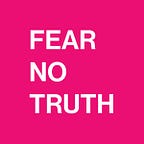The Process Of Finding, Telling And Managing A Brand’s True Story
Let’s start with finding a brand’s story. This is not just about crafting a narrative; it’s about uncovering the truth at the core of the brand. It involves deep introspection and a thorough understanding of the brand’s origins, its mission, and its values. This process often requires digging into the company’s history to explore the founder’s motivations, the problems they were trying to solve, and the impact they hoped to have. It’s about finding those human elements that people can relate to and care about. Sometimes, this can be a founder’s personal struggle or a unique insight that led to the brand’s creation. Other times, it could be the brand’s consistent commitment to certain values or community. Importantly, the true story of a brand is always rooted in authenticity; it’s not a fabricated narrative but rather the honest truth that defines the essence of the brand.
Once the brand’s true story is identified, the next step is telling the story. This is perhaps the most critical step, where creative expression plays a significant role. The brand’s story needs to be communicated in a way that resonates with its audience, using a tone and style that reflects the brand’s personality. It’s important that the story is told consistently across all platforms, whether on the company’s website, through social media, in advertising, or even through packaging. Each touchpoint with consumers is an opportunity to reinforce the brand’s narrative and deepen the consumer’s connection to the brand. Visuals, tone, language, and medium all play crucial roles in how effectively the story is told. For instance, a luxury brand may use elegant imagery and sophisticated language, while a brand built on sustainability might focus on transparency and community-based storytelling.
Managing the brand’s story is an ongoing process that requires vigilance and adaptability. As markets evolve and new competitors emerge, the brand may need to adjust its narrative without losing its core identity. This management involves continuously monitoring how the story is received by the audience and making adjustments based on feedback and changing circumstances. It also means keeping the story alive and fresh, finding new ways to retell it, and new platforms to tell it on. Importantly, as the brand grows and potentially diversifies, it’s crucial that the story evolves in a way that remains true to the brand’s core values and origins. This might mean highlighting new achievements or innovations, or perhaps revisiting and reinforcing the foundational elements of the brand’s narrative during a major anniversary or ahead of a significant launch.
Also, managing a brand’s story is not just about external communications but also about internal buy-in. Employees at every level should understand and express the brand’s story. This internal alignment ensures that the brand’s values and messaging are consistently reflected in every aspect of the business, from customer service to product development and beyond.
Consumers now have more power than ever to shape a brand’s story. They interact with brands, discuss them online, and share their experiences with vast networks. This means that part of managing a brand’s story effectively is engaging with consumers where they are and making them a part of the narrative. Successful brands often encourage user-generated content, engage in conversations with followers, and are responsive to customer feedback, seeing these interactions as opportunities to reinforce their story and values.
In short, finding, telling, and managing a brand’s true story is an essential strategy for differentiation and connection in a crowded market. It requires authenticity, creative communication, and ongoing engagement with both internal and external audiences. By effectively leveraging its true story, a brand can create meaningful connections, build loyalty, and ultimately achieve lasting success. This process is dynamic and continuous, adapting to new challenges and opportunities as the brand grows and evolves with its market.
